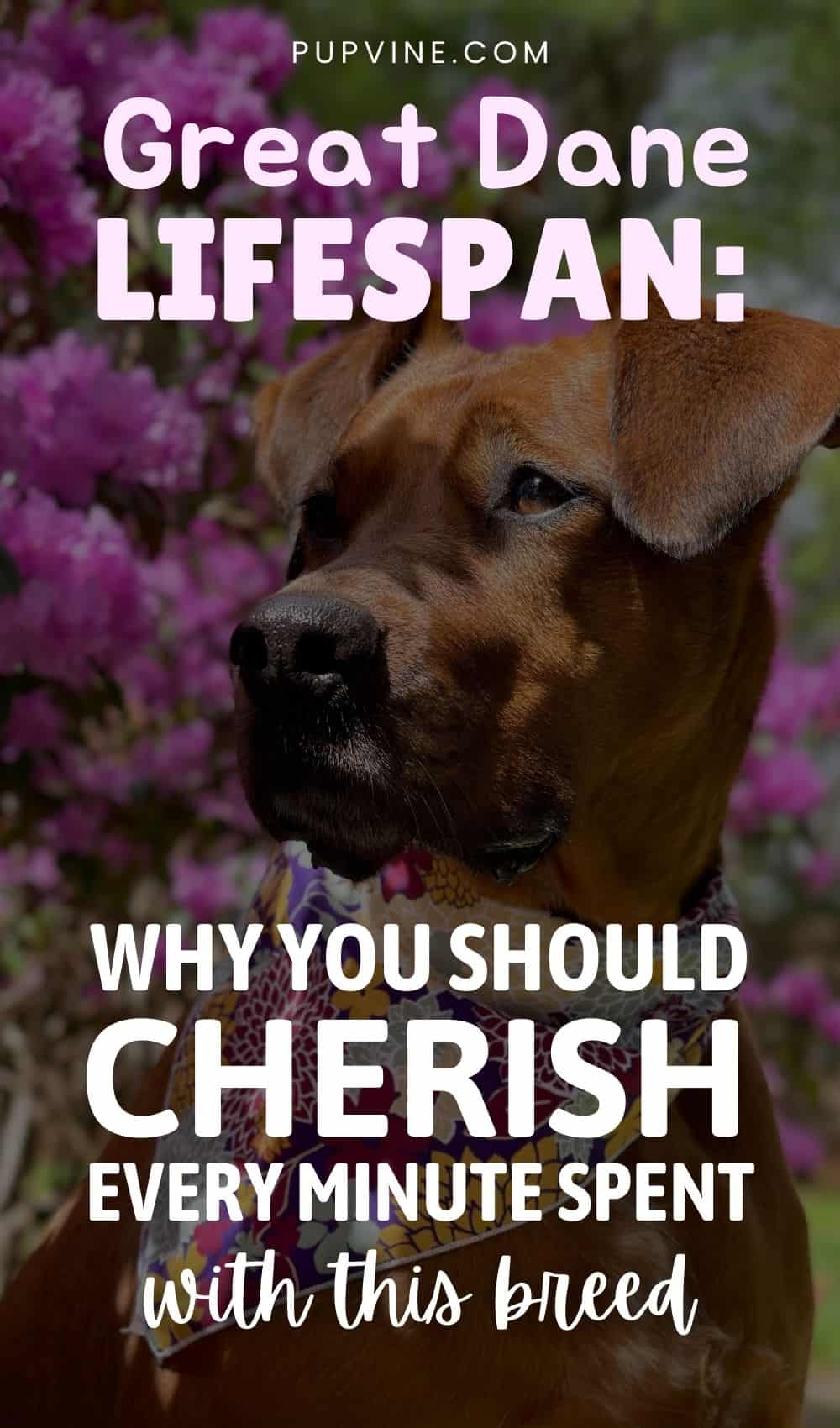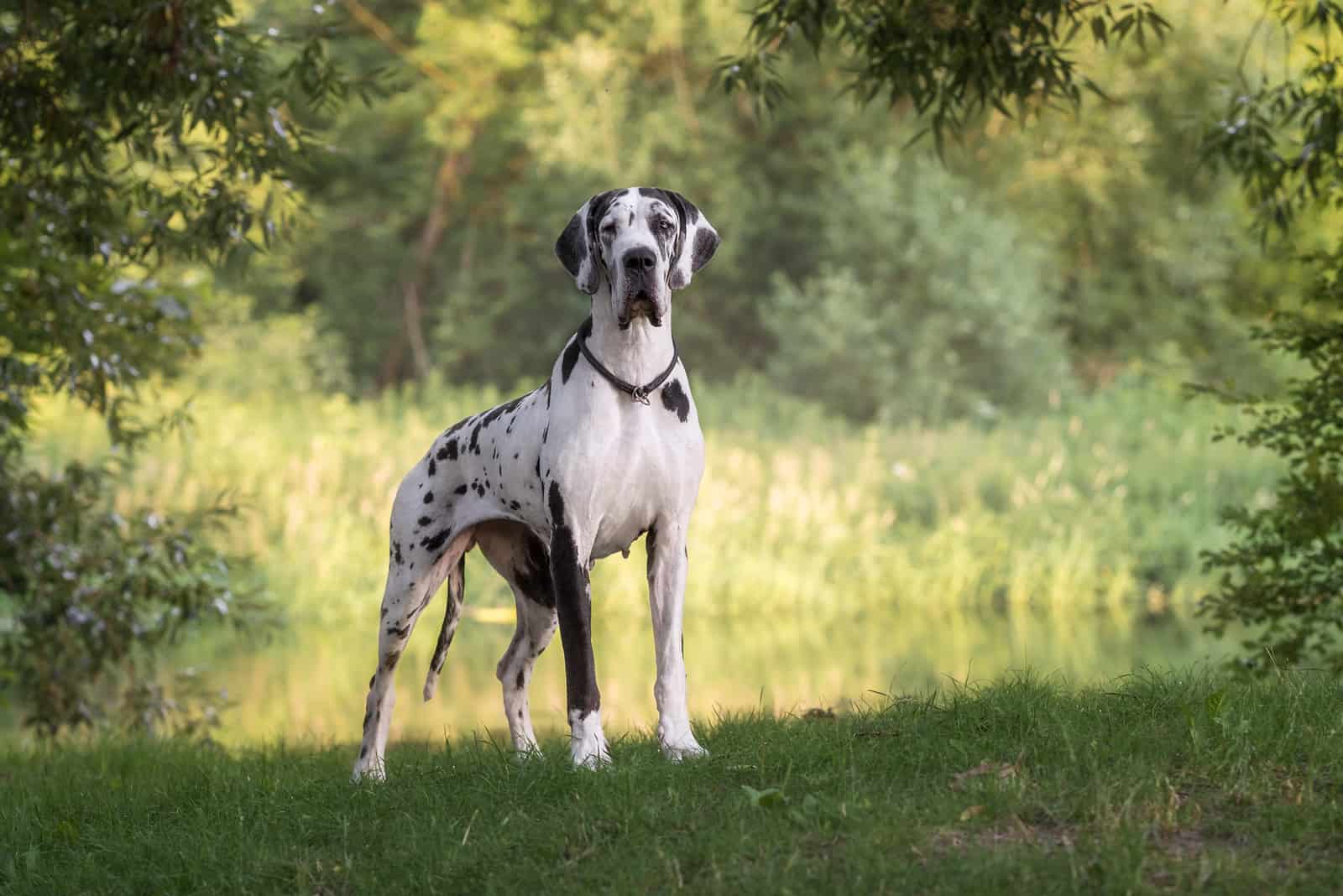Every Great Dane owner faces the same issue: the short lifespan of this dog breed.
It’s heartbreaking to know how short the Great Dane lifespan is. These wonderful giants live only six to eight years. It’s a terribly short time for a purebred dog.
In this article, we will take a closer look at the matter and explain to you and all Great Dane lovers and owners all about the Great Dane lifespan as well as what affects it.
Prepare to be surprised!
General Overview Of The Great Dane Dog Breed
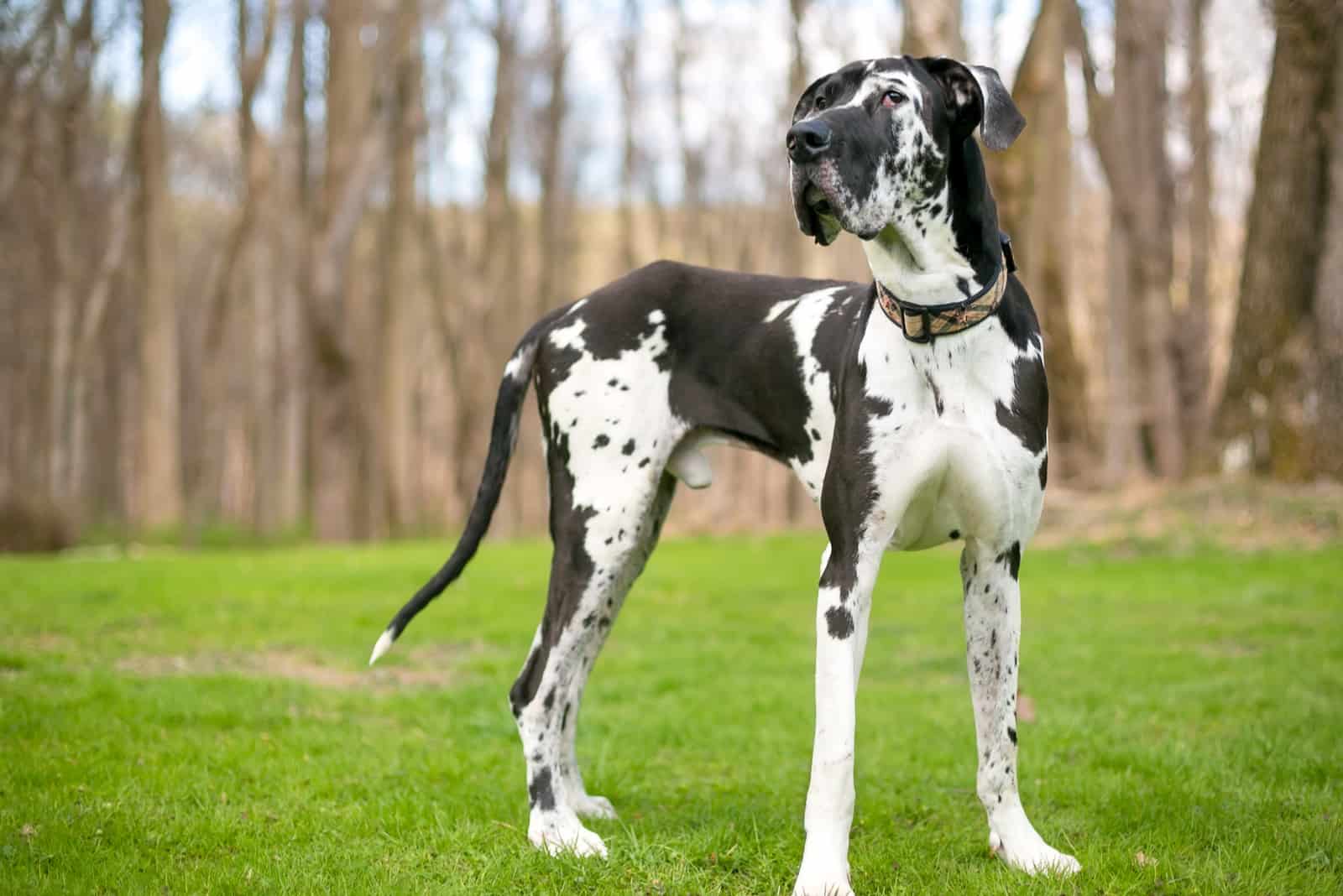
The Great Dane is a giant breed of dogs adored not only in America but in Europe, too. Also known as the German Mastiff or Deutsche Dogge, the Great Dane has come a long way from being a boarhound to become a beloved species recognized by the American Kennel Club (AKC).
The breed did originate in Germany, but its popularity is global. The legacy from the parent breeds, the English Mastiff and the Irish Wolfhound, gave the dog an extraordinary appearance. You will definitely spot a Great Dane in a crowd!
In fact, the world’s tallest dog is a Great Dane named Zeus, standing tall at 111.8 cm from shoulder to paw.
But, there is more to this dog breed than its size. They make excellent guard dogs and protectors. If you’re looking for a dog that’s almost perfect, you’ve found it. That is if you overlook one tiny problem: the short lifespan.
Some Great Dane lovers try to overcome this problem by mixing the Great Dane with other dog breeds like the Chihuahua, Cane Corso, Husky, Poodle or Corgi, creating a puppy that will, hopefully, live longer.
A future Great Dane owner should take a look at this list of traits we’ve put together:
[table id=39 /]
Great Dane Lifespan: How Long Does A Great Dane Live?
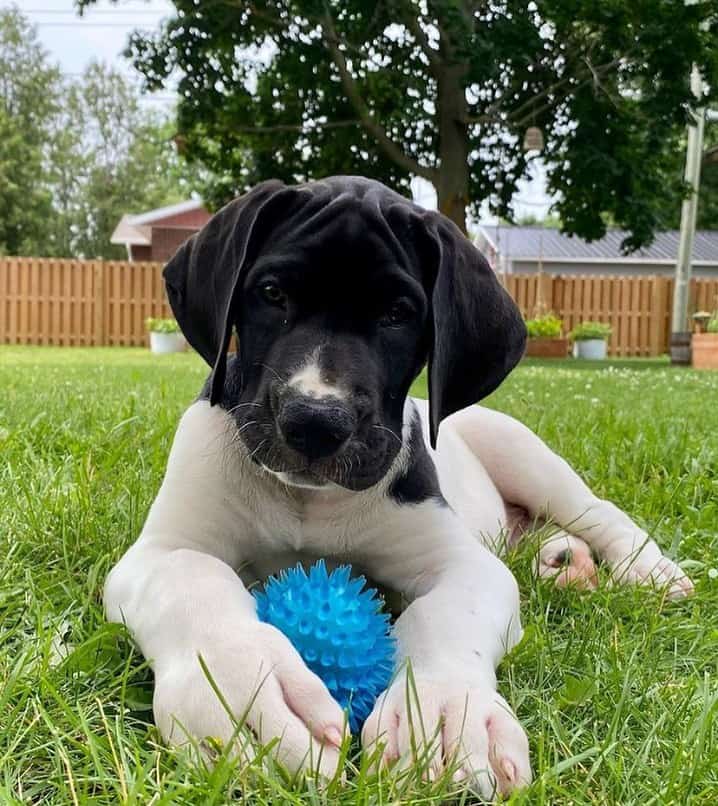
Photo from: @greatdane.world_
The average lifespan of this breed is only six to eight years. Some canines don’t even make it that far and have an even shorter lifespan of five to six years of age. Indeed, it’s quite a short period of time, but the Great Danes still manage to impress everyone with their appearance and unique personality.
Some fortunate dog owners get to see the 9th birthday of their beloved companion.
Great Dane Life Expectancy:Why Do They Die Early?
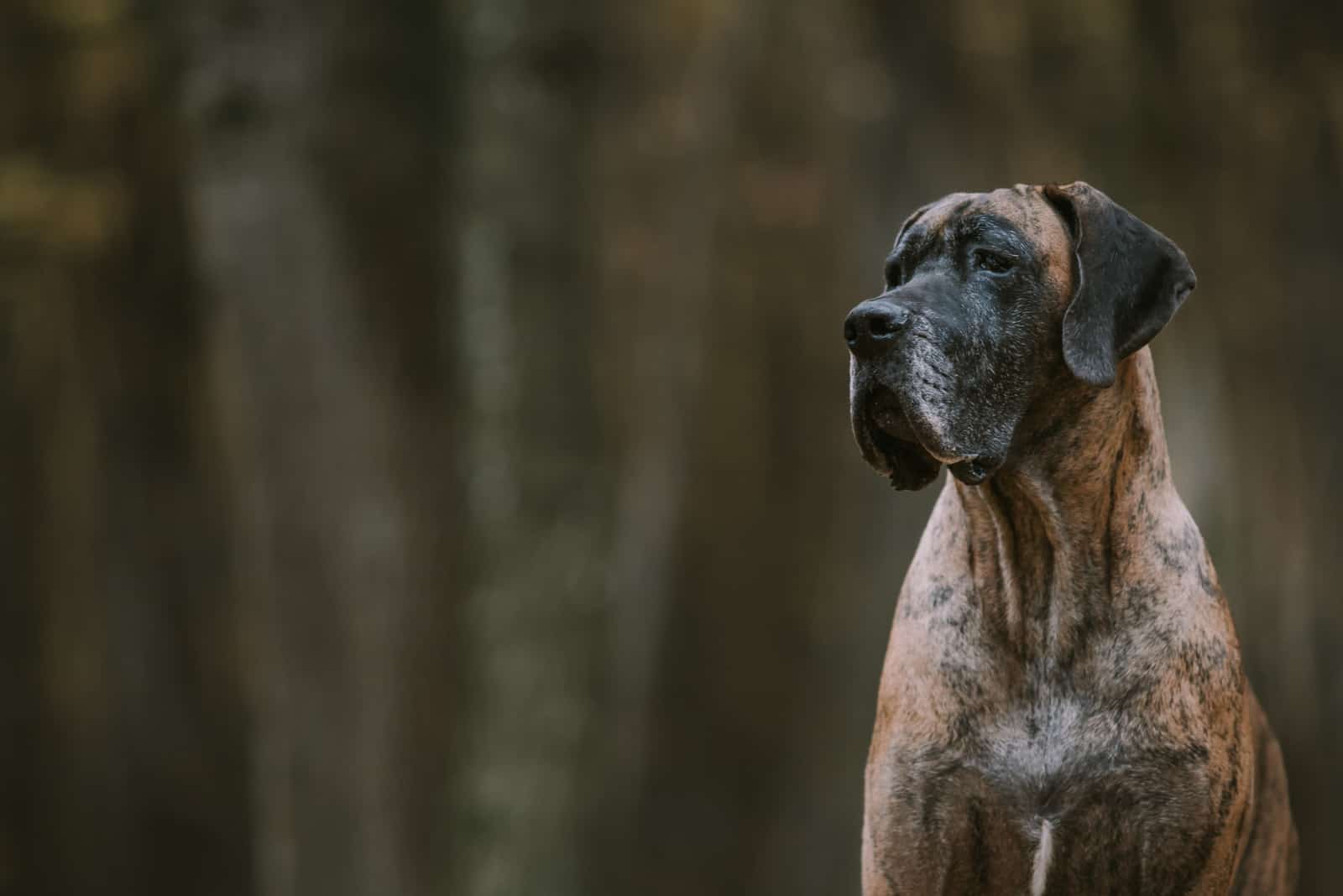
The Great Dane is one of the best dog breeds to have as a pet.
They get straight A’s in every field but life expectancy. As we’ve mentioned before, this dog breed lives only six to eight years. It’s a giant breed, but it lives shorter than some small dog breeds.
Their short life is the only thing making them imperfect.
But, why do Great Danes die early?
This question has bugged many dog owners and canine experts. Sadly, there is no explanation for the short Great Dane lifespan. If we were to look at the natural world and base the lifespan of dogs according to their size, smaller dogs would have a short lifespan, while larger dogs would have a longer average lifespan. Being so huge, the Great Dane should then live the longest, right?
Unfortunately, no. Here’s where all rules fall in the water.
Some dog experts claim that the growth rate of a Great Dane puppy is faster than any other breed’s pups. Check the Great Dane growth chart to see how big this dog can get!
This dog ages faster and dies sooner than many large or small dog breeds.
In other words, the Great Dane lives his life in fast-forward mode, making its lifespan short.
Another factor that affects the short lifespan is inherited diseases and disorders. They reduce the life of a dog and affect the general quality of life. Health problems are the major reason why Great Danes die so early.
What Affects The Average Great Dane Lifespan?
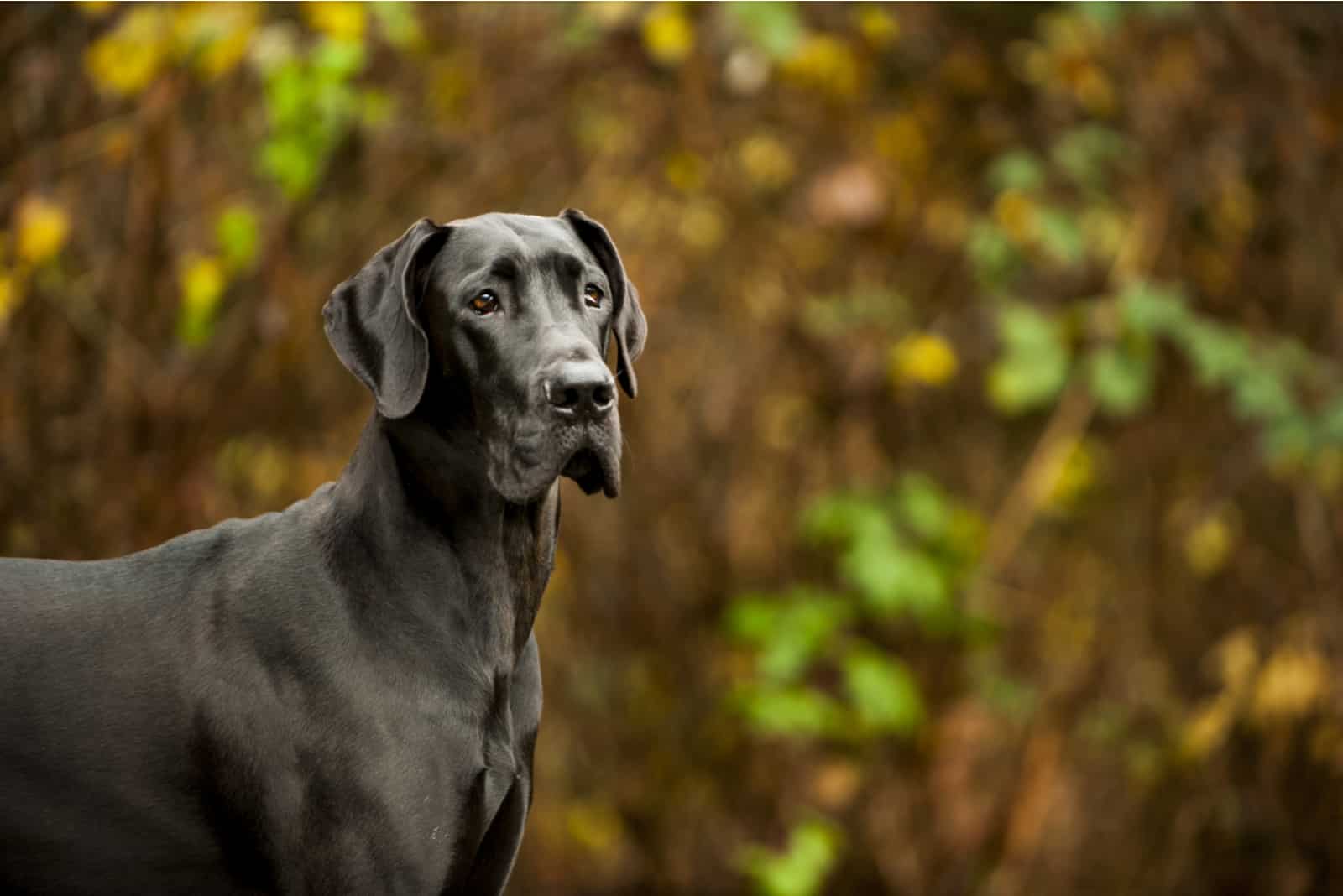
The Great Dane is one of those dog breeds that are prone to many diseases. Unfortunately, some of them are life-threatening and greatly affect their general life quality and the length of their life span.
The most common health problems affecting Great Danes are listed down below:
• Bloat
• Arthritis
• Obesity
• Hip dysplasia
Gastric dilatation and volvulus (GDV) or BLOAT
The medical term for bloat is gastric torsion and dilatation volvulus. Once the dog’s stomach has twisted, it will quickly become distended and full of air, making the dog look bloated.
Signs of bloat in a Great Dane are:
• Hard, distended, or bloated abdomen
• Retching
• Painful abdomen
• Excessive drooling
• Pacing
• Increased heart rate or pulse
• Collapse
Bloat is a serious and life-threatening condition. It cannot be treated at home! If you suspect your Great Dane has bloat, go to the vet asap!
Bloat usually needs surgery. It may cause blockage in your dog’s GI tract, which is quite painful for the dog.
The vet will take an x-ray of the dog’s stomach to see if it is twisted and decide if it needs surgery. Basically, surgery is to untwist the stomach.
Once they’ve twisted the stomach back over, the vet will sew the stomach in place to prevent this from happening again.
Fortunately, bloat can be prevented. There are many precautions you can take to stop this from happening. But still, some dogs will experience bloat, no matter what you do.
The best thing you can do is to keep your dog’s meals small and frequent, two or three times a day. Such meals reduced the chance of developing bloat.
It’s important to make your Great Dane rest for an hour after its meal. It ensures the food is fully digested.
Also, any extensive exercise prior to or post-meal will lead to bloat, so never let your dog get into such a situation.
Osteosarcoma or bone cancer
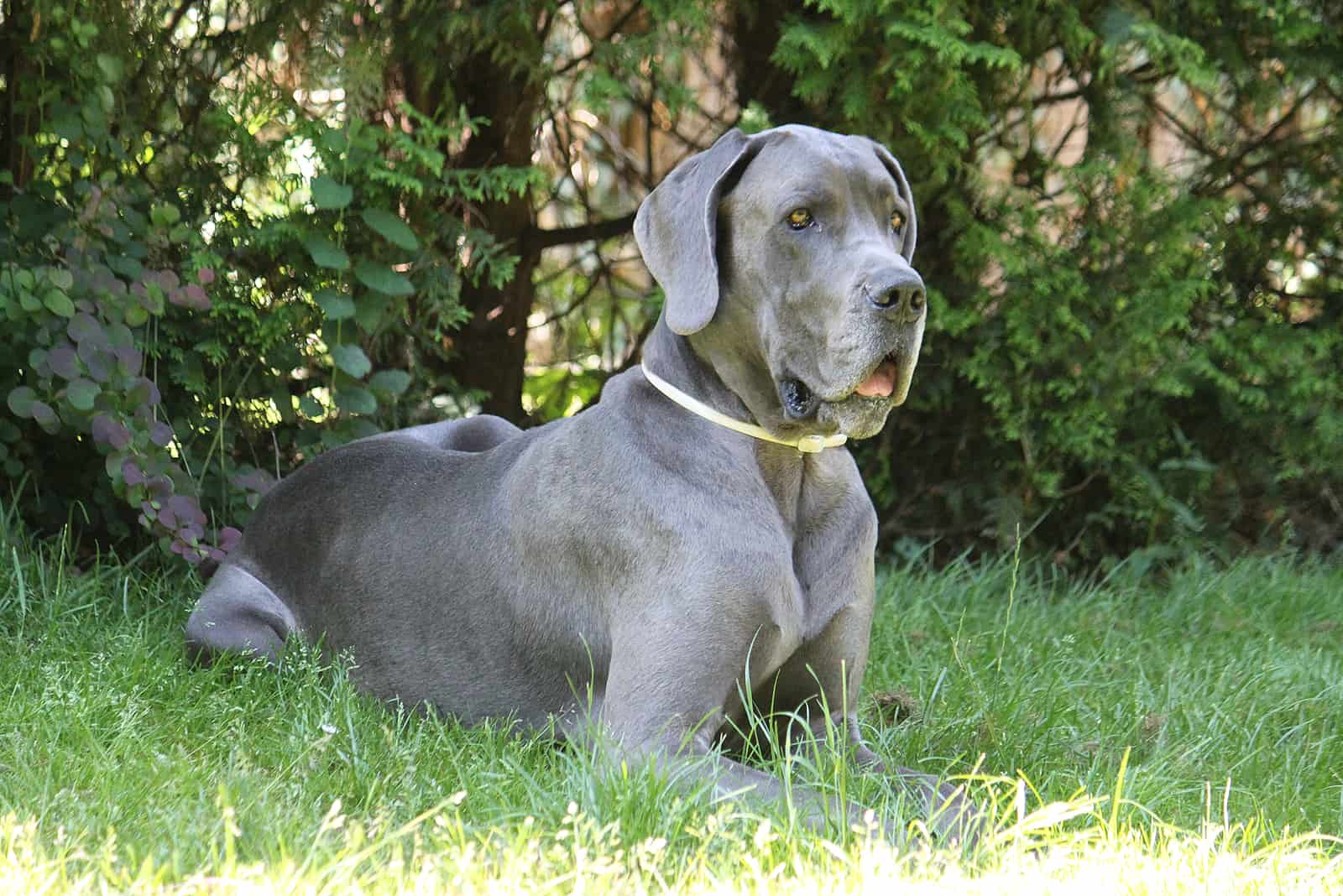
Osteosarcoma is a common cancer in large dog breeds, especially Great Danes and Mastiffs. Dogs suffering from osteosarcoma develop a swollen area around the wrist, shoulder, or knee.
These areas are very hard to touch and painful. Osteosarcoma is, unfortunately, treated by removing the affected leg. Other therapies include chemotherapy and radiation.
Removing the leg is sometimes not possible because of the dog’s size. Many Great Danes aren’t able to function on only three legs. Add to this the cost of these procedures, and you’ll see why many cases are left untreated.
Osteosarcoma is very aggressive and has a poor prognosis.
There are other types of cancer your Great Dane can suffer from as he gets older. You may notice new lumps and bumps on the body. Sometimes it’s just a fatty mass, but sometimes those lumps are cancerous.
The vet should look at these masses, take a small sample, and look at it under a microscope. This will determine if the mass is cancerous or not.
Luckily, you, too, can determine if your dog is suffering from cancer. There are many indicators of this disease.
Those indicators are:
• Vomiting
• Diarrhea
• Weight loss
• Seeing a mass growing on your dog
Any of these signs should ring an alarm bell to go and visit the vet as any of them may mean cancer. Your vet is there to help you establish a diagnosis and find the best possible treatment for your Great Dane.
Dilated cardiomyopathy DCM
Older Great Danes can suffer from lots of heart diseases. A common one is dilated cardiomyopathy. It’s a condition when the heart grows bigger.
The muscle walls of the heart become thinner and aren’t able to function properly anymore. As the Great Dane grows older, the heart doesn’t function as it should, meaning the blood supply doesn’t cover its required needs.
Common signs of heart problems are:
• Coughing, especially after they have been outside
• Breathing difficulty
• Falling over after bouts of energy
Your vet can listen to your dog’s heart to see if there’s a heart murmur. Aside from this, the vet will also listen to their lungs since many heart conditions cause problems with your Great Dane’s lungs.
A heart murmur is always an indication something is wrong with the dog’s heart.
If your dog doesn’t have any symptoms of heart disease but you’re still worried, your vet can run tests on your dog’s heart. The most common ones are a chest x-ray, an echocardiogram or an ultrasound of the heart, and an EKG.
The test results will discover how far progressed the heart disease is and if there is a heart condition at all. Once the diagnosis is established, the vet will give your Great Dane medications that will help him lead a normal life.
The heartbeat will return to normal, and any fluid in the chest and abdomen will go away.
Some recent studies have shown that grain-free diets are one reason why Great Danes suffer from DCM. That’s why many vets don’t recommend a grain-free diet unless there are other medical circumstances.
Arthritis
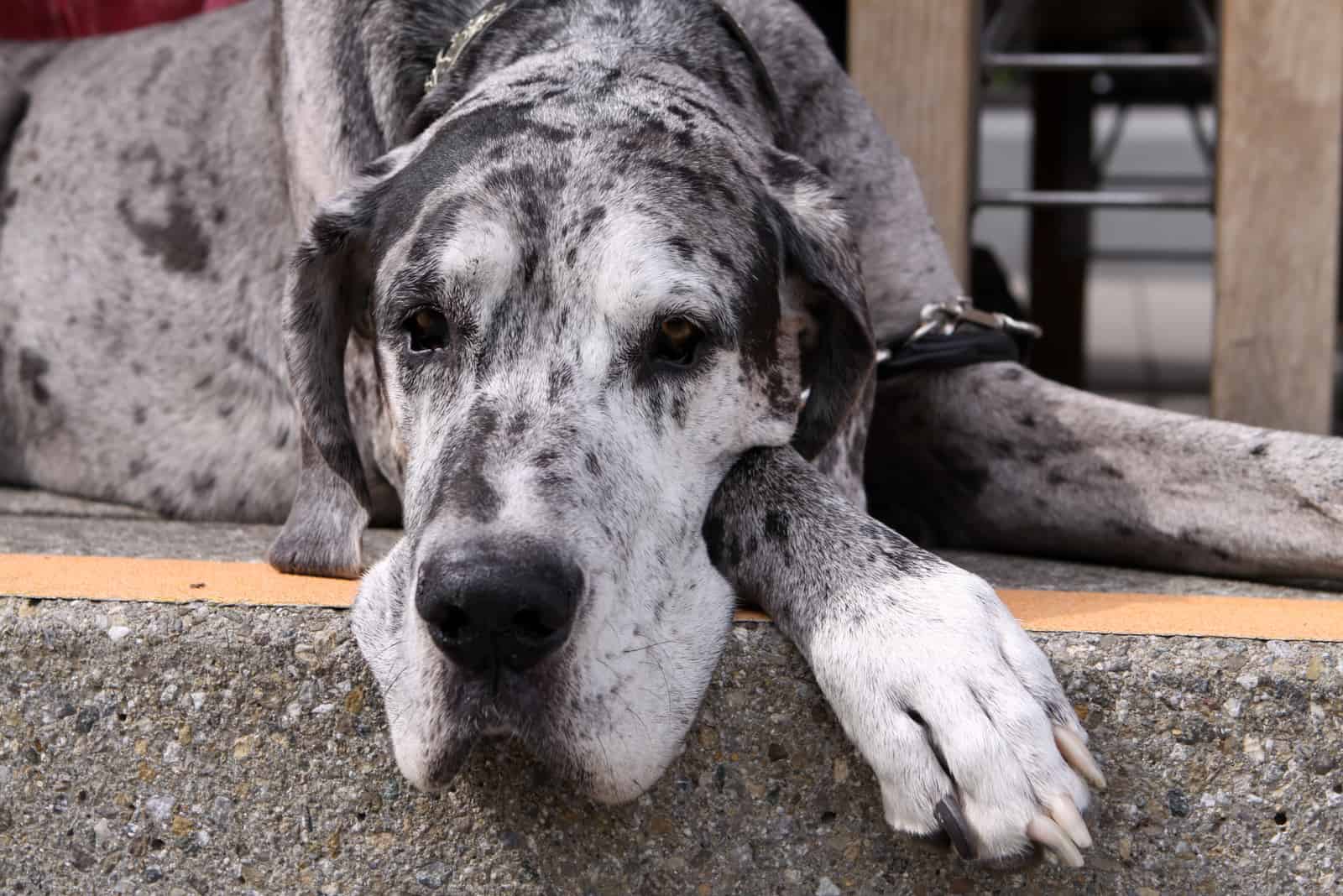
A dog that once had hip or elbow dysplasia when he was younger may develop arthritis in old age. Even if the dog hasn’t suffered from dysplasia before, arthritis can develop.
Dogs with arthritis have problems moving around comfortably. They have problems with the simplest of activities like getting up. They limp and sometimes don’t even use one leg.
Arthritis is a common problem with overweight Great Danes. A heavy bodyweight builds pressure on the dog’s bones. Keep your dog’s body healthy and lean, and give him enough food and exercise to avoid arthritis.
If your Great Dane is limping for more than one day, schedule a checkup at the vet, so you can figure what’s wrong with your dog. It could be nothing, but it could also be arthritis.
Common signs of arthritis and joint pain in Great Danes are:
• Limping
• Difficulty walking
• Problems with standing, especially after lying down for a long time
• Crying out in pain
The vet may prescribe medications and joint supplements to reduce the pain and inflammation in your dog’s joints.
However, surgical procedures are faster and more efficient – they fix the problem permanently.
Establish a diagnosis first and then decide together on the treatment.
Obesity
Obesity affects older Great Danes the most. As your dog starts to age, their metabolism slows down, just like it does in people.
As the metabolism slows down, food should be decreased too. Otherwise, your dog will soon become obese.
If a Great Dane puts on a few extra pounds, it may cause other health problems like:
• Joint pain and arthritis
• Liver and kidney problems
• Heart problems
• Breathing problems
Luckily, there are many things you can do to help your dog lose weight. Increase their exercise time. Take them for a long walk. Make that walk a bit faster than usual. Include them in your morning jog around the block.
Also, whenever you can, take them to the dog park and throw some balls for them. There will be other dogs at the park who will play with your Great Dane.
Something else you can do to reduce your dog’s weight is to reduce the quantity of food in their meals. Start with decreasing the food by small amounts, like 10% of their daily intake or even 20% for chubbier fellas.
A strict diet will help them lose a few extra pounds in no time.
Other health problems that can reduce a Great Dane’s life span include:
Hip dysplasia
Hip dysplasia is a paralyzing disease that affects the hip joints of the great Dane. Even though this disease strikes other dogs, small, medium, and large, the Great Dane breed is more prone to it.
Great Danes who suffer from hip dysplasia or any other bone-related disease develop pain and lose flexibility in their joints. This limits the dog’s activity and makes its movement slow and difficult when getting up or lying down.
Jumping and playing becomes impossible, as well as climbing stairs.
Hip dysplasia changes not only a dog’s physical abilities but its eating habits and overall personality.
Severe cases of this condition show Great Danes who don’t put pressure on their hind legs, meaning they need their human’s support to stand.
Hypothyroidism
A Great Dane can also suffer from a health problem called hypothyroidism.
This health condition happens when the thyroid gland malfunctions and is unfit to produce enough of the hormone called thyroxine. This hormone is crucial for the dog’s metabolic rate regulation. It manages the growth and development of the Great Dane.
A dog who suffers from hypothyroidism will put on weight without any noticeable change in its appetite.
If you notice such symptoms, it would be best to notify your vet in time.
Do Bigger Dogs Have A Shorter Lifespan?
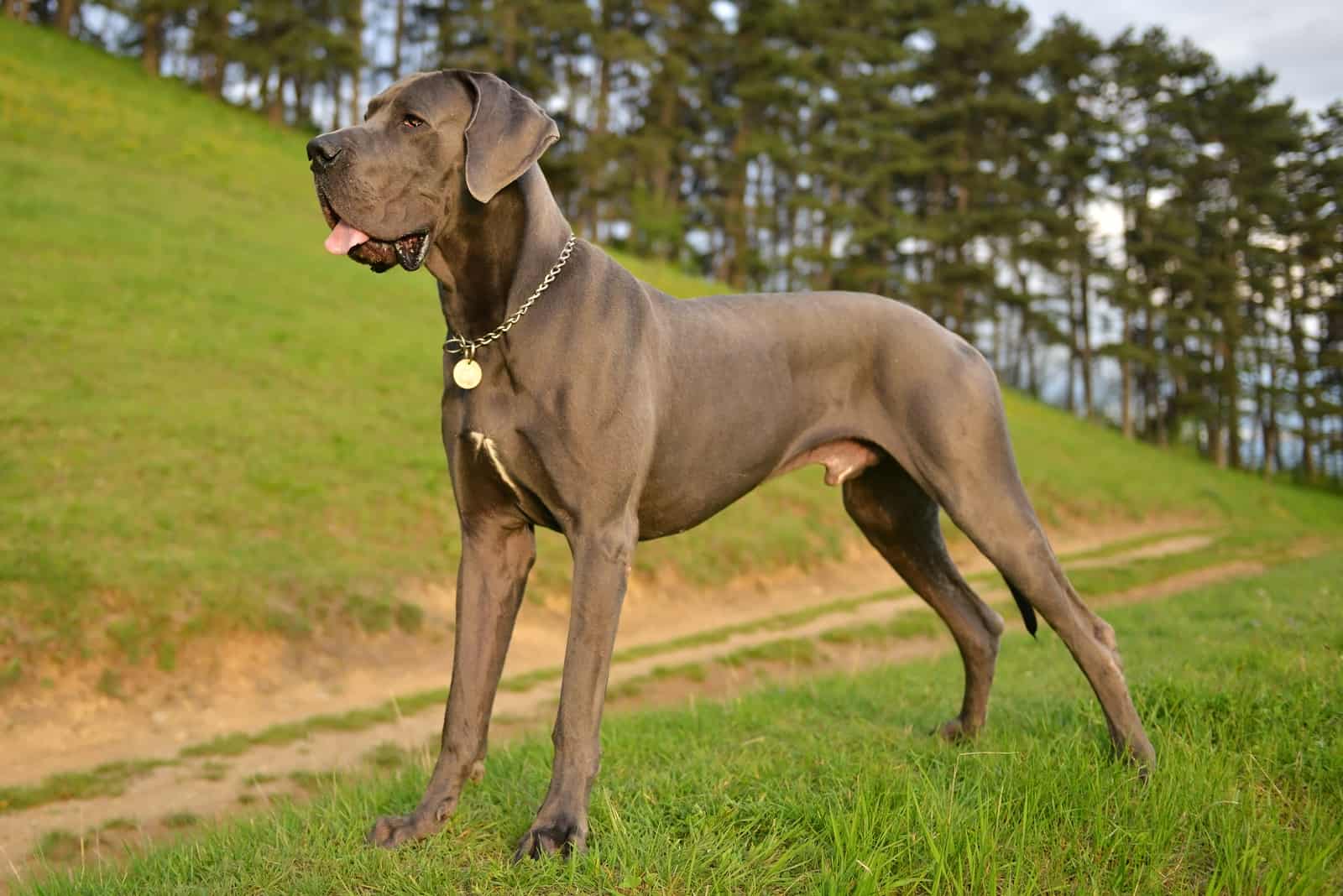
It’s an unwritten rule and a scientific mystery. Big dogs have a shorter lifespan than their smaller four-legged buddies.
Large animals in the wild, like elephants or whales, live very long lives. While their smaller buddies, like mice, only live a few years.
Then, why don’t big dogs have an average lifespan appropriate to their size? No one knows.
Maybe it’s hypothyroidism? Maybe it’s an overall bad life quality? Maybe it’s a breed fault?
Be that as it may, we can’t do anything but make sure their short life is wonderful.
What Is The Lifespan Of A Great Dane Female?
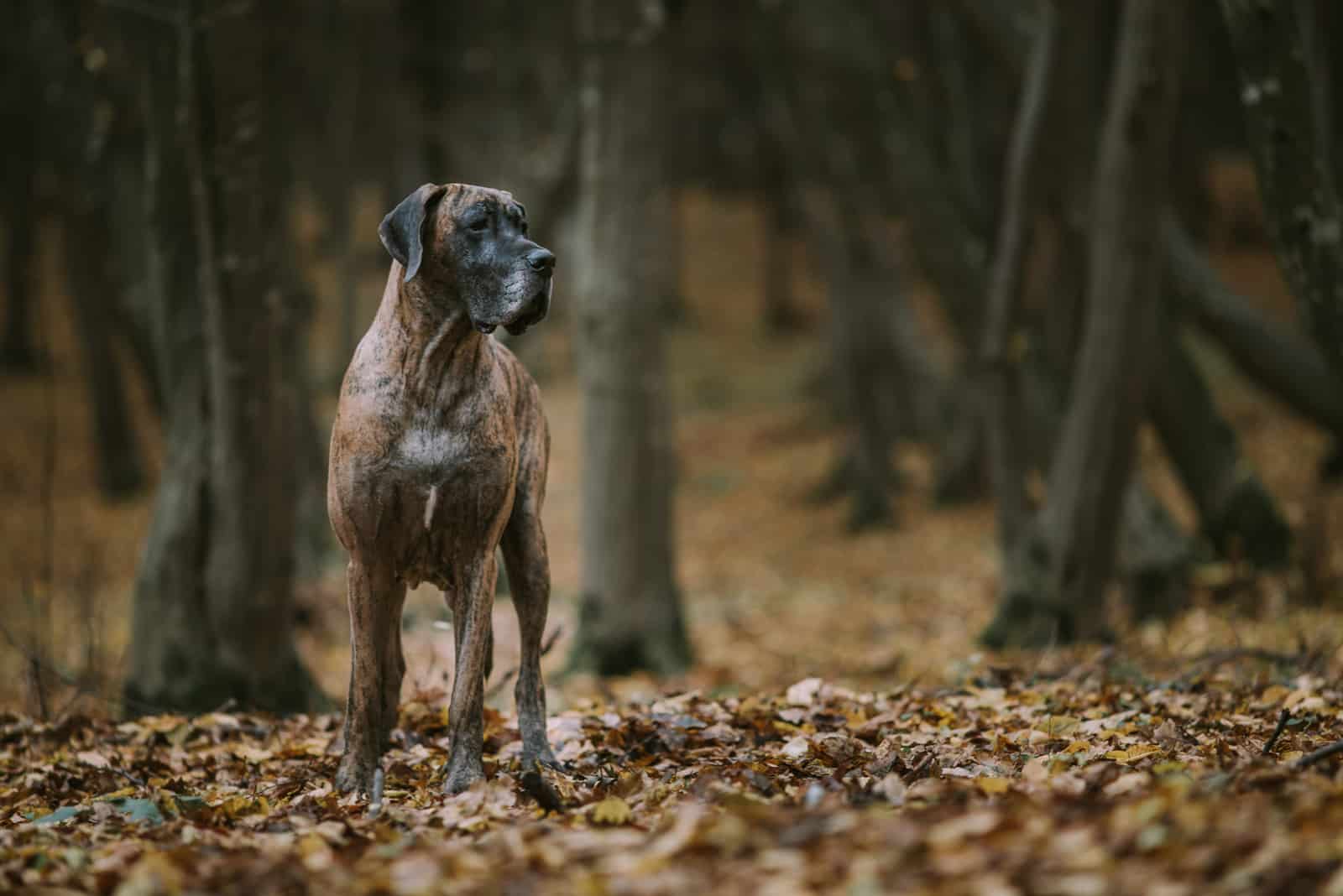
When it comes to male vs female Great Dane, female Great Danes tend to live a bit longer than their male counterparts. However, this difference isn’t a big one and doesn’t really mean anything when picking a dog.
It is believed their smaller size is the reason why female Great Danes live a bit longer than males.
The same rule can be applied to small male Great Danes. It has been proven that smaller males also have a somewhat longer lifespan.
Great Dane Symptoms Of Old Age
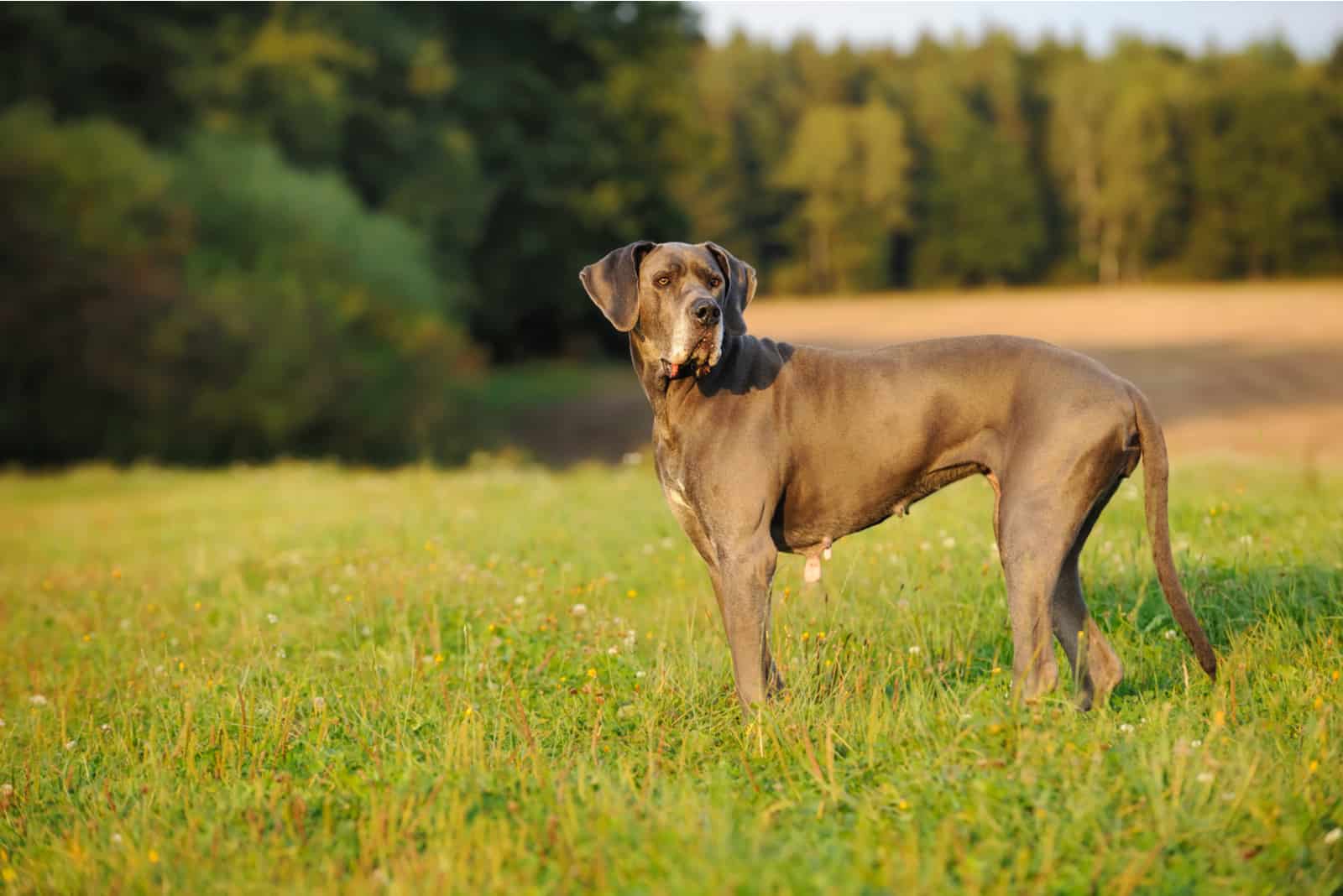
If you’re wondering when your Great Dane will start becoming old, don’t worry – you’ll see the signs. There are numerous symptoms that will indicate your dog has entered its senior years.
It’s the time when you need to be extra careful and watch out for any signs of illness.
The most common signs of potential problems your Great Dane might experience are the following:
• Vomiting or diarrhea for more than one day
• Limping or trouble moving
• Lack of appetite
• Coughing
• Drooling
• Blood coming from anywhere
• Not behaving as usual
Any of these signs should signal for you to call your vet. The vet will examine your dog and find out what’s wrong with your Great Dane before things get too serious.
Lifespan Of A Great Dane Dog: How To Have A Happy Life Together
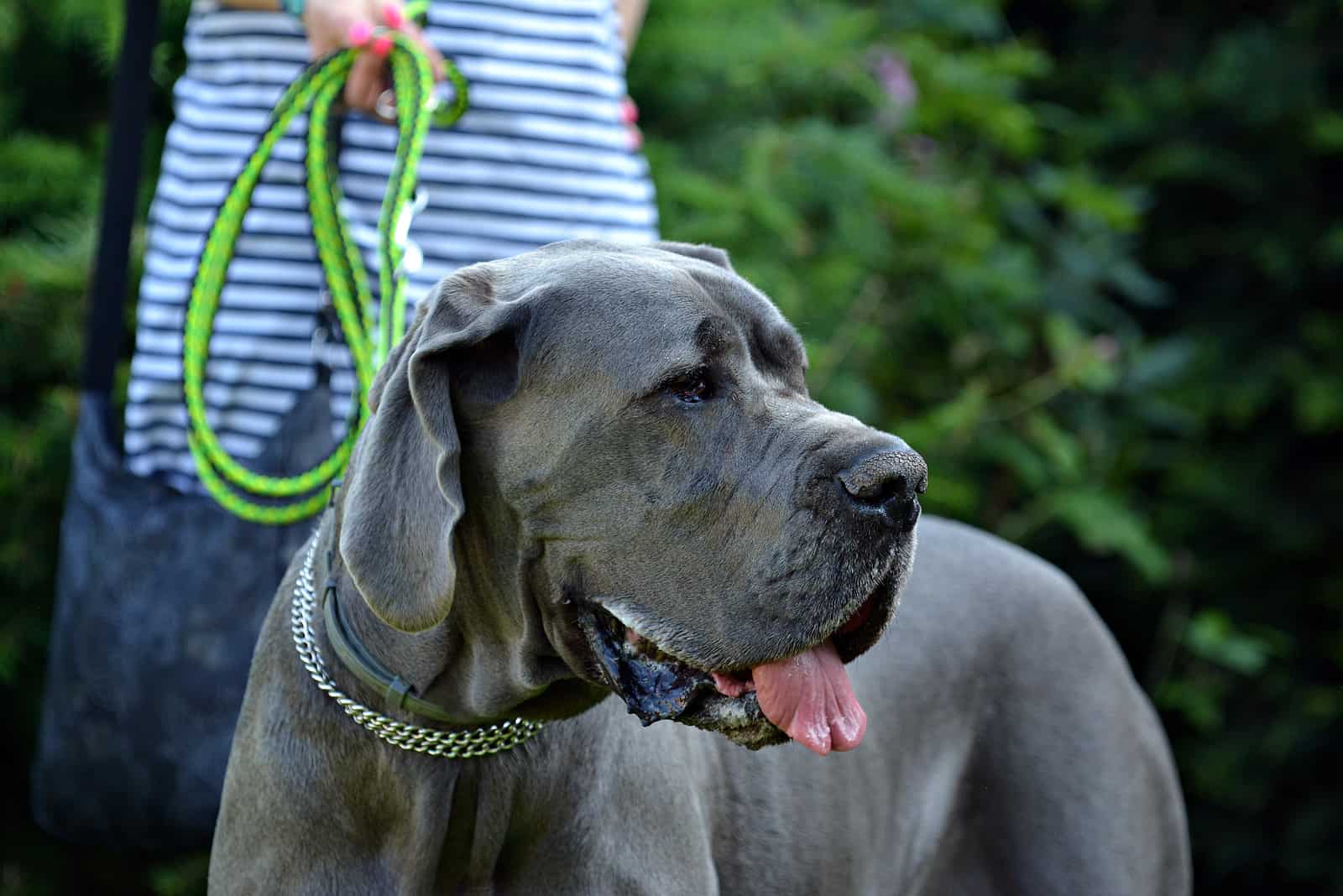
You can do more than you think to ensure your dog leads a happy and healthy life. If a dog owner engages his Great Dane in everyday activities, the dog will feel loved and appreciated. Also, it will give him a dose of his required daily activity.
On the other hand, such joined activities are the perfect time to bond with your dog.
Great Danes are intelligent dogs that learn fast, especially when it comes to affection and care from their owner. The Great Dane gives but only asks for love in return. If you want your dog to love you, you need to express your love frequently.
Your Great Dane will appreciate the affection you give it, as well as toys and chewies. Throw in a comfy bed and a nice collar, and you may think you have it all.
These are great things to start with, but a Great Dane needs more for a healthy life. The dog needs a healthy and balanced diet, followed by regular vet checkups and regular exercise.
However, there is one thing that greatly affects their lifespan, and that is breeding. If the puppy’s story begins the wrong way, there’s no chance there will be a happy ending.
Why don’t we discuss the factors we can tackle further?
A balanced and healthy diet
Just like humans, dogs depend on their diet to maintain themselves. A healthy Great Dane depends on many factors, but a healthy diet is the biggest one. It’s always important you monitor what you give your dog to eat.
Sometimes regular dog food just won’t cut it. A dog needs nutrients that will satisfy its hunger but also provide additional vitamins that will keep him from developing poorly.
Food for the Great Dane has to be specifically made for this breed. Otherwise, this dog might face problems while it grows.
The number of meals a day plays an important role too. A Great Dane needs three meals per day, while other dogs usually have two. This doesn’t mean all three meals should be a bowl overflowing with kibble.
Keep it moderate. No one wants an obese dog, especially not a Great Dane. Such dogs develop a range of health problems and make their already short lifespan even shorter.
If your Great Dane grows too rapidly, it might get musculoskeletal conditions like:
• Hip or elbow dysplasia
• Osteochondrosis
• Hypertrophic osteodystrophy
• These are bone and muscle problems that might affect any Great Dane, so be on the lookout.
Physical activities for the Great Dane
Every dog needs lots of physical activities to stay in shape. If a dog is not active, it brings along a host of other problems, both physical and mental.
What you can do is to make a routine that includes exercise and a stroll with your dog. Generally speaking, the Great Dane doesn’t need that much exercise. Keep it simple. Keep on moving.
Vet checkups
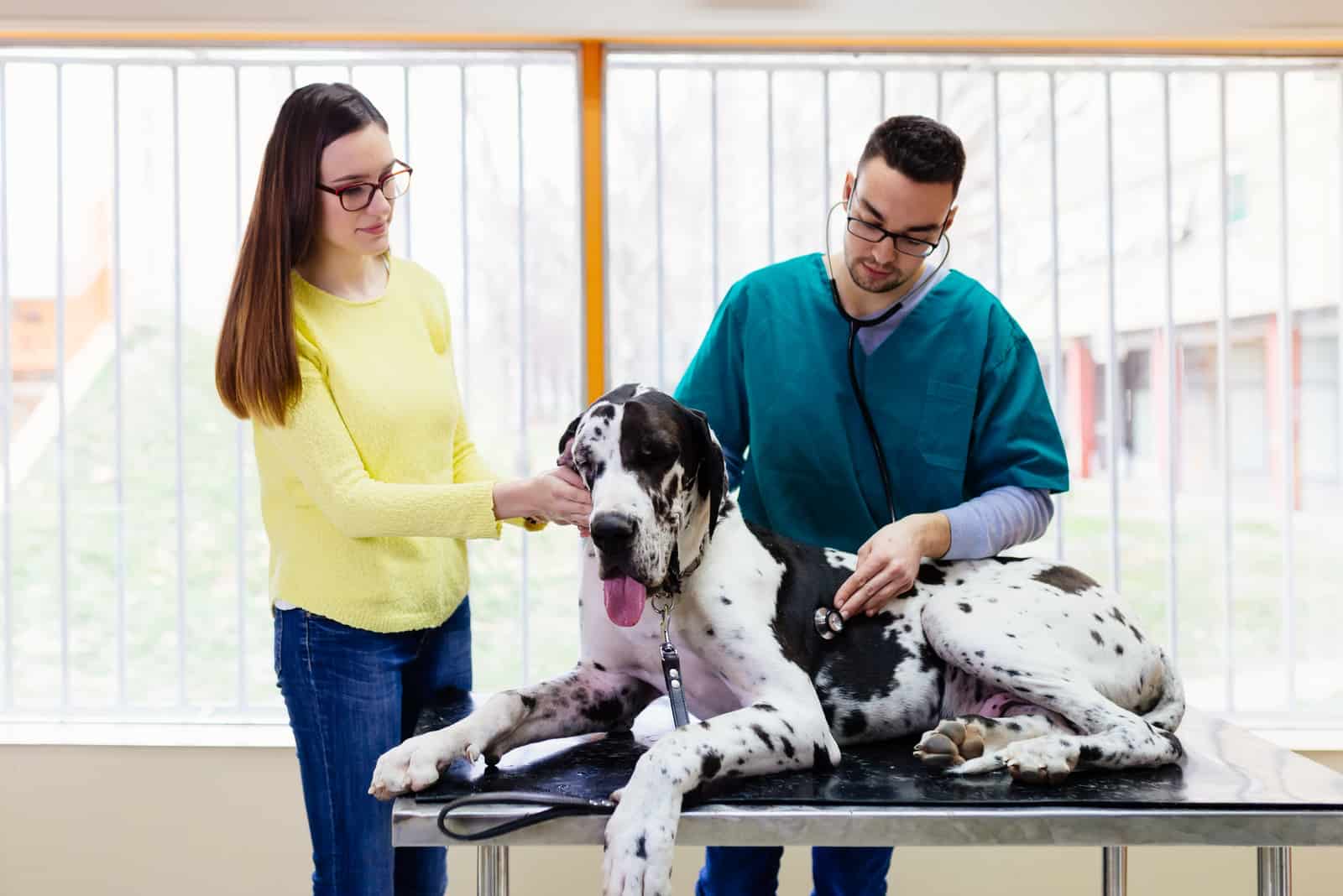
Due to its gigantic size, the Great Dane has a lot of potential health issues. If you own one of these gorgeous giants, you need to remember to visit the vet regularly, even if it has no unusual symptoms.
But, if your dog exhibits a change in its activity, appetite, or general behavior, pick up that phone and call the vet’s office. The vet will find a reason behind it.
The sooner the vet diagnoses a health condition, the sooner treatment will work and cure your sidekick.
The vet isn’t there only to give your dog medical treatment. He also follows your Great Dane through its life and ensures all their needs are met.
Breeding
Breeding is the one thing Great Dane owners can’t really change. But, what they can do is to check the breeding history and see if it’s in order. If there are any abnormalities, the vet should be consulted.
Sometimes it’s only about a change in diet, while sometimes, it’s something so serious it requires surgery.
There isn’t much a new Great Dane owner can do but buy from a reliable Great Dane breeder and research the puppy parents.
Related: Top 6 Great Dane Breeders In Ontario Of 2022
Conclusion
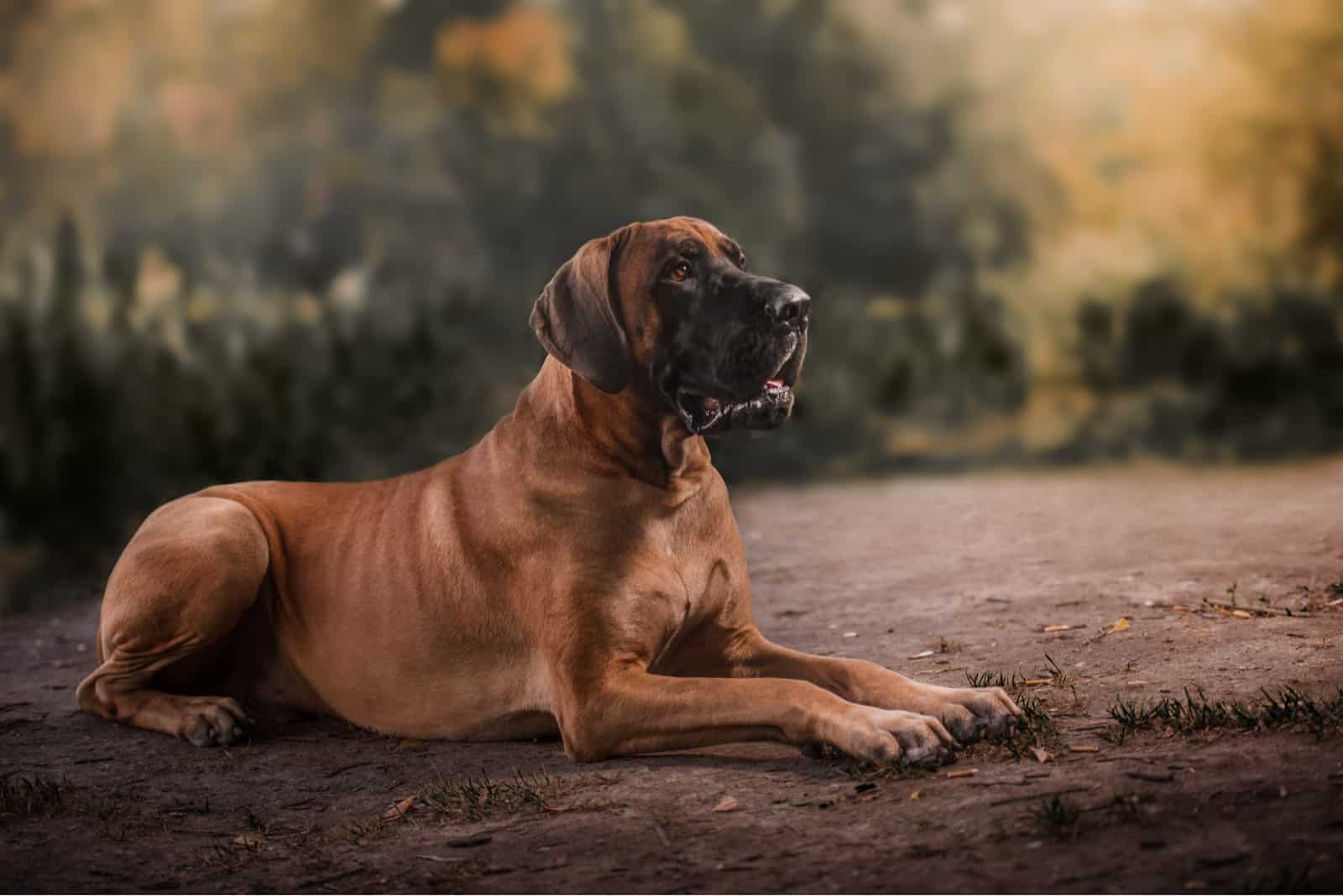
The Great Dane lifespan is a mystery. It’s not certain this question will ever be answered correctly. Still, what is certain is that you will pay for the ideal family dog.
The Great Dane is a giant breed dog, but it doesn’t mean there is no place for him in your heart or home. Many dog owners strive to provide a happy and healthy life for their Great Danes, and they manage it quite successfully.
It’s a shame these dogs don’t live longer.
Read Next: Great Dane Ear Cropping: Why (Not) Do It?
